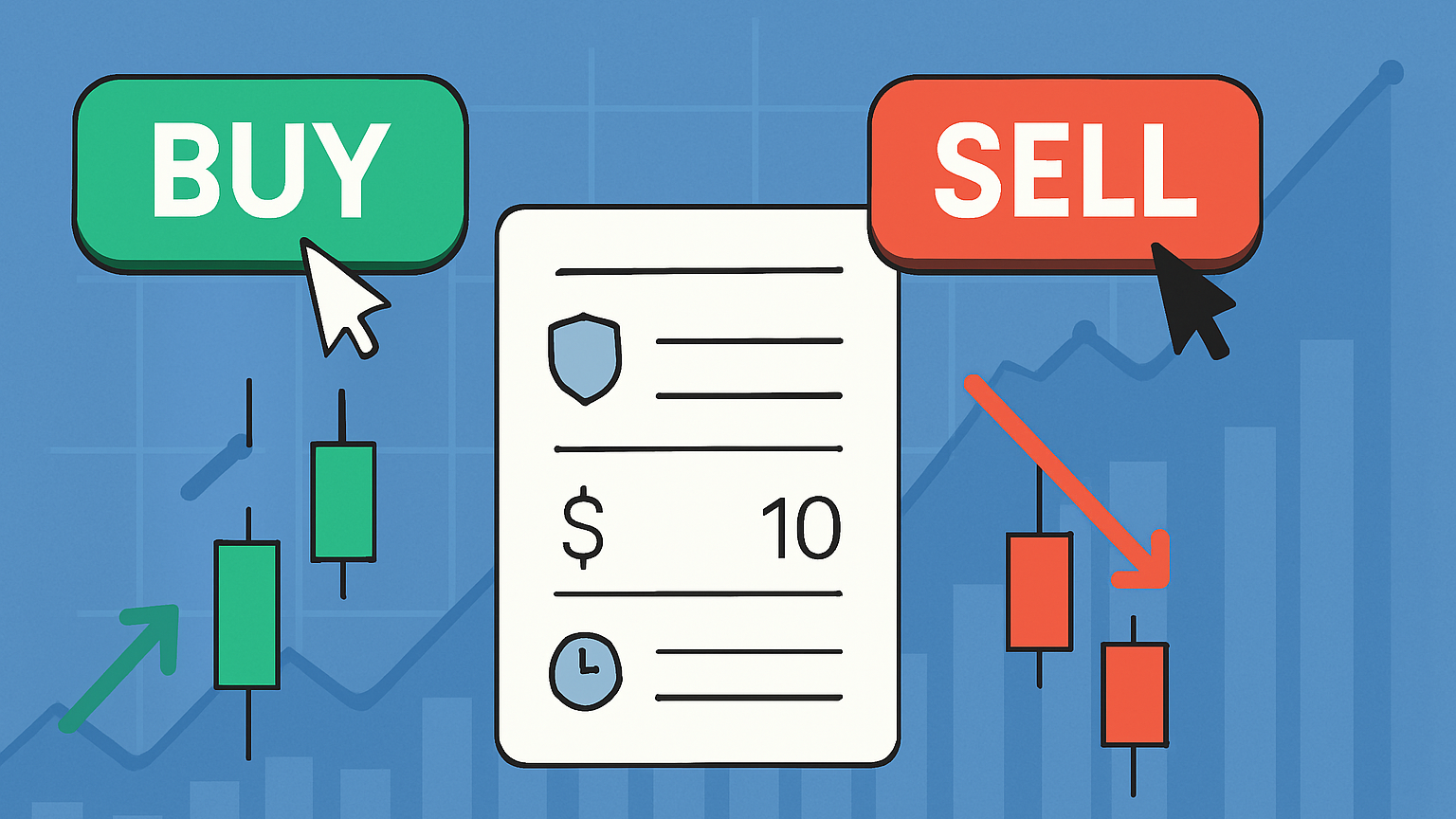Explore how Seq2Seq models transform trading predictions by leveraging historical data and advanced neural network architectures.
Seq2Seq models are changing how traders predict market trends. These deep learning models analyze historical data to forecast stock, forex, and crypto prices. Here's what you need to know:
- How It Works: An encoder processes past market data, while a decoder predicts future trends. Attention mechanisms improve accuracy.
- Applications: Used for stocks, forex, and crypto, these models handle market noise, volatility, and long-term patterns.
- Key Tools: LSTM, GRU, and Transformer models are popular choices. Hybrid approaches combine traditional and modern methods.
- Metrics: Evaluate performance with RMSE, MAE, and backtesting.
Seq2Seq models offer a practical way to turn financial data into actionable insights, improving trading strategies across markets.
Sequence-to-Sequence (seq2seq) Encoder-Decoder Neural Networks Explained
Main Parts of Seq2Seq Trading Models
Let's break down the key components that make these predictive models work.
How Encoder-Decoders Work
The encoder-decoder framework processes market data by creating a context vector that summarizes essential market features. For instance, when analyzing stock price trends, the encoder processes weeks of historical data, including price movements, trading volume, and technical indicators. The decoder then uses this summarized information to predict future market behavior. This setup becomes even more powerful when attention mechanisms are added, as explained below.
Using Attention in Models
Attention mechanisms improve Seq2Seq models by letting the decoder focus on specific parts of the input sequence instead of relying solely on one compressed vector. According to Max Brenner, attention allows the decoder to directly reference encoder states, boosting prediction accuracy.
This approach is particularly effective for capturing long-term market trends, handling irregular trading patterns, and providing forecasts that are easier to interpret. For example, an attention-based sequence-to-sequence model (ASSM) outperformed methods like ARIMA and KNN across multiple datasets. It achieved this by analyzing data in both directions, improving feature learning and handling missing data more effectively.
LSTM and GRU Networks
LSTM and GRU networks are widely used for processing sequential market data because they address challenges like the vanishing gradient problem in RNNs. Here's a quick comparison:
| Feature | LSTM | GRU |
|---|---|---|
| Gate Structure | Three gates (input, output, forget) | Two gates (reset, update) |
| Training Speed | Slower due to complex gating | Faster with fewer parameters |
| Memory Usage | Higher | Lower |
| Performance | Better for complex sequences | Efficient for smaller datasets |
For example, in a PyTorch-based stock price prediction task, GRU models showed better precision and faster training times compared to LSTM models. The GRU model completed training 5 seconds faster while maintaining a lower mean square error on test data. Thanks to its simpler structure, GRU is often the go-to choice when computational resources are limited or when working with smaller datasets.
Best Seq2Seq Models for Markets
Transformer Models in Trading
Transformer models have made a big impact on time-series forecasting in financial markets. Unlike older, sequential models, they process large amounts of historical data all at once, making them faster and more efficient. Thanks to their self-attention mechanism, these models can focus on key time steps, uncovering complex market patterns. Tools like PatchTST, iTransformer, and Crossformer take this even further by handling both numerical and textual data, offering deeper market insights. That said, research indicates that Transformer-based models provide only slight improvements in price sequence predictions compared to traditional methods.
DES-PSP Model for Price Prediction
The DES-PSP (Double Encoder Seq2seq-Based Presidential Concept Stock Price Prediction) model has gained attention for its strong performance in recent benchmarks. Here's how it stacks up against traditional LSTM models:
| Metric | DES-PSP | Traditional LSTM | Improvement |
|---|---|---|---|
| MSE | 0.6372 | 0.6596 | 3.4% |
| RMSE | 0.7982 | 0.8122 | 1.7% |
| MAE | 0.5201 | 0.5215 | 0.3% |
Professor Atlas Wang from The University of Texas at Austin notes: "In large-scale AI models, there may exist an 'essential sparsity' – a point where removing additional features sharply degrades performance. This suggests potential for streamlining financial models without sacrificing accuracy".
Combined Seq2Seq and Classic Methods
Building on innovations like DES-PSP, hybrid approaches are now blending the best of modern and traditional models. These combinations aim to leverage the unique strengths of different architectures, such as:
- LSTM-Transformer Hybrids: Merging LSTM's ability to handle sequences with the parallel processing power of Transformers.
- Bidirectional Variants: Using both forward and backward sequence analysis for a more complete picture.
- Attention-Augmented Traditional Models: Adding attention mechanisms to older architectures for improved focus on key data points.
This shift toward hybrid models highlights a key realization: no single model can fully capture the complexities of market behavior. By combining multiple approaches, researchers are developing more reliable and versatile prediction systems.
Testing and Measuring Results
After exploring model architectures and performance metrics, applying them in real-world scenarios often uncovers additional challenges and areas for refinement.
Measuring Forecast Accuracy
Evaluating Seq2Seq models in trading requires metrics that gauge prediction reliability. Common metrics include Root Mean Square Error (RMSE), Mean Absolute Error (MAE), and Mean Absolute Percentage Error (MAPE).
- RMSE: Indicates the spread of prediction errors and emphasizes larger errors more heavily. It’s useful for assessing high-impact trading decisions.
- MAE: Focuses on the average absolute error, offering a straightforward measure of overall performance.
- MAPE: Expresses errors as percentages, making it ideal for comparing performance across different markets.
| Metric | Definition | Best Use Case |
|---|---|---|
| RMSE | Measures prediction error spread | High-impact trading decisions |
| MAE | Average absolute error value | General performance assessment |
| MAPE | Percentage-based error measure | Cross-market comparisons |
Backtesting Seq2Seq Strategies
Beyond accuracy metrics, backtesting ensures models perform well against historical data. For instance, Alex Honchar applied an ML-based strategy on Litecoin (LTC) data from January 2018. The strategy grew a $10,000 portfolio to $10,053, achieving a Sharpe ratio of -3.04, compared to -4.68 for a buy-and-hold approach.
"Basically we just want to check the difference between prices and multiply it by signal sign - up or down and accumulate this info during test period."
- Alex Honchar
Platforms like LuxAlgo streamline backtesting with an AI-powered platform that optimizes signal settings based on historical data, enabling tests across various timeframes and market conditions.
Common Testing Problems
Even with strong forecasts, testing often encounters hurdles:
- Market shifts: Models trained on historical data may struggle during regime changes.
- Transaction costs: Fees and slippage can erode returns.
- Look-ahead bias: Using future data during training skews results.
- Overfitting: Models overly tailored to past data might fail in new environments.
To address these issues, practitioners should use robust cross-validation methods and maintain separate validation datasets. Prioritize strategies that consistently perform across diverse market conditions.
Building and Using Seq2Seq Models
Software Tools and Libraries
Deep learning frameworks are key to developing Seq2Seq trading models, with PyTorch being a standout choice. Its flexibility and rich ecosystem make it ideal for building encoder-decoder architectures tailored to time-series modeling.
Here are the tools you’ll need:
- Model Development: PyTorch, TensorFlow
- Data Processing: Pandas, NumPy
- Technical Indicators: TA-Lib, LuxAlgo Library
- Visualization: Matplotlib, Plotly
These tools provide everything required for creating and deploying Seq2Seq models in live trading scenarios.
Live Trading Setup
Using Seq2Seq models in live trading requires careful data handling and regular model updates to stay aligned with market dynamics.
Key steps for implementation:
- Normalize sequences locally to ensure stable predictions.
- Use walk-forward validation to adjust to changing market conditions.
- Incorporate technical indicators like MACD, RSI, and moving averages.
- Update model weights periodically with the latest market data.
This approach ensures the model remains relevant and complements insights gained during backtesting.
Platform Connections
For live trading, smooth platform integration is crucial to synchronize real-time data with your trading strategies. LuxAlgo, for instance, connects with TradingView to enable real-time analysis and strategy execution. Its Ultimate subscription adds AI-powered optimization features.
Critical integration elements include:
- Automated data feeds with robust error handling.
- Failsafe mechanisms for connection issues.
- Monitoring prediction latency to avoid delays.
- Scheduled data sampling to maintain training stability.
Time-series data often presents challenges like low autocorrelation, non-stationarity, heteroskedasticity, sudden change points, and a low signal-to-noise ratio. To tackle these, incorporate probabilistic forecasting and regularly validate performance using the latest market data.
Conclusion: Impact of Seq2Seq in Trading
Benefits for Traders
Seq2Seq models bring a fresh approach to time-series forecasting, addressing limitations found in traditional methods. They handle challenges like low autocorrelation, non-stationarity, and unclear signals more effectively. Unlike older auto-regressive models, Seq2Seq models are better equipped to deal with trends and seasonal patterns. The use of attention mechanisms allows the decoder to focus on the most critical historical price patterns, leading to sharper and more accurate predictions.
For example, when applied to Ercot energy load data, an attention-augmented Seq2Seq model achieved a GaussianNLLLoss of –0.70, significantly outperforming baseline models that scored 0.58 and –0.22. These results highlight the model's superior predictive power and its potential for advancing AI in trading.
Future Directions in Market AI
Looking ahead, Seq2Seq models are poised to evolve in ways that will further benefit traders:
- Probabilistic forecasting, enabling traders to explore multiple market scenarios and gain a broader understanding of potential outcomes.
- Hybrid approaches, like the ES-RNN model that excelled in the M4 competition, showing how blending traditional statistical techniques with deep learning can yield stronger results.
The next wave of development should integrate external factors to provide better market insights. Tools like LuxAlgo's real-time integration could play a crucial role in advancing these methods. As these technologies progress, we can expect more refined applications across areas like stocks, forex, and cryptocurrency trading. Success will depend on balancing model complexity with ease of use while staying responsive to fast-changing market dynamics.






